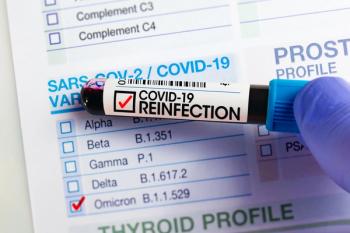
- June 2023
- Volume 89
- Issue 6
June 2023 Interactive Case Studies
Cases highlight patients who have attention-deficity/hyperactivity disorder and diabetic peripheral nephropathy.
Case 1:
For the past 7 years, DB—a 27-year-old woman with attention-deficit/hyperactivity disorder (ADHD)—has been successfully treating her symptoms with a 10-mg tablet of amphetamine/dextroamphetamine salts (Adderall IR) 3 times a day, for a total daily dose (TDD) of 30 mg. She has no other medical history. Recently, DB has found it difficult to fill her prescription because of the national Adderall shortage. DB and her physician are concerned, as the FDA website says the medication will be on back order for the foreseeable future. DB has never tried another medication for ADHD, and she asks the pharmacist to recommend an alternative.
Question: What should the pharmacist advise?
Answer: Several stimulants may be recommended, including extended- and immediate-release formulations. Because DB has experienced adequate symptom relief on an immediate-release preparation, it would be a prudent to recommend an immediate-release alternative with similar pharmacokinetics. The duration of action of methylphenidate (Ritalin) is 3 to 5 hours, a little less than the approximately 6 hours (dose-dependent) of amphetamine salts. There is no specific guidance in the literature about switching from amphetamine to methylphenidate, but it is reasonable to switch from one to the other at the same dose and titrate up as needed at weekly intervals. Therefore, the pharmacist can recommend that DB start a trial of methylphenidate, 10 mg, in the morning, at noon, and at 4 pm, for a TDD of 30 mg, and to do so 30 to 45 minutes before meals to improve absorption. DB should monitor changes in her symptoms and contact her physician if her condition worsens.
Case 2:
A local physician calls the pharmacy in need of advice regarding one of his patients. IO is a 46-year-old man with diabetic peripheral neuropathy that is managed with 300 mg of oral gabapentin 3 times a day, for a total daily dose (TDD) of 900 mg. Although IO notes some relief in symptoms, he continues to be in pain. Previously, he had tried higher doses of gabapentin but was unable to tolerate the increase in concomitant sedation. The physician wants to switch IO to pregabalin before considering a trial of duloxetine.
Question: What dose of pregabalin should the pharmacist recommend?
Answer: Although gabapentin and pregabalin are similar, notable differences between them may influence their clinical effects. Compared with gabapentin, pregabalin is more predictable, more rapidly bioavailable (peaking at 1 hour post dose), and less likely to be affected by food. There is no specific guidance on how to switch between the 2 because evidence from trial data is limited. Cross-tapering and direct switching may both be considered, depending on such patient-specific factors such as level of pain and/or ability to understand the instructions. The easier option would be a direct switch, whereby gabapentin is discontinued and pregabalin initiated at the next dosing interval. A reasonable dose conversion from gabapentin to pregabalin is 6:1. A patient taking a TDD of 900 mg of gabapentin should take 150 mg TDD, or 75 mg twice daily, of pregabalin. IO should be monitored for pain relief. His dose may be adjusted as needed based on pain level and drug tolerability.
About the Authors
Kylie Price, PharmD, is a 2023 graduate of the University of Connecticut School of Pharmacy in Storrs.
Stefanie Nigro, PharmD, BCACP, CDCES, is an associate clinical professor in the Department of Pharmacy Practice at University of Connecticut School of Pharmacy in Storrs.
Articles in this issue
over 2 years ago
June 2023 Pet Peevesover 2 years ago
June 2023 OTC Product Newsover 2 years ago
COVID-19 OTC Case Studiesover 2 years ago
Keep Seasonal Allergy Symptoms in Checkover 2 years ago
Deprescribing, Medication Therapy Management Go Hand in Handover 2 years ago
Pharmacist Challenges Revocation of License to Practiceover 2 years ago
“I Want Everyone to Walk in and Say, ‘Wow!’ "over 2 years ago
AI Plus Mobile App May Help With Smoking CessationNewsletter
Stay informed on drug updates, treatment guidelines, and pharmacy practice trends—subscribe to Pharmacy Times for weekly clinical insights.


















































































































































































































